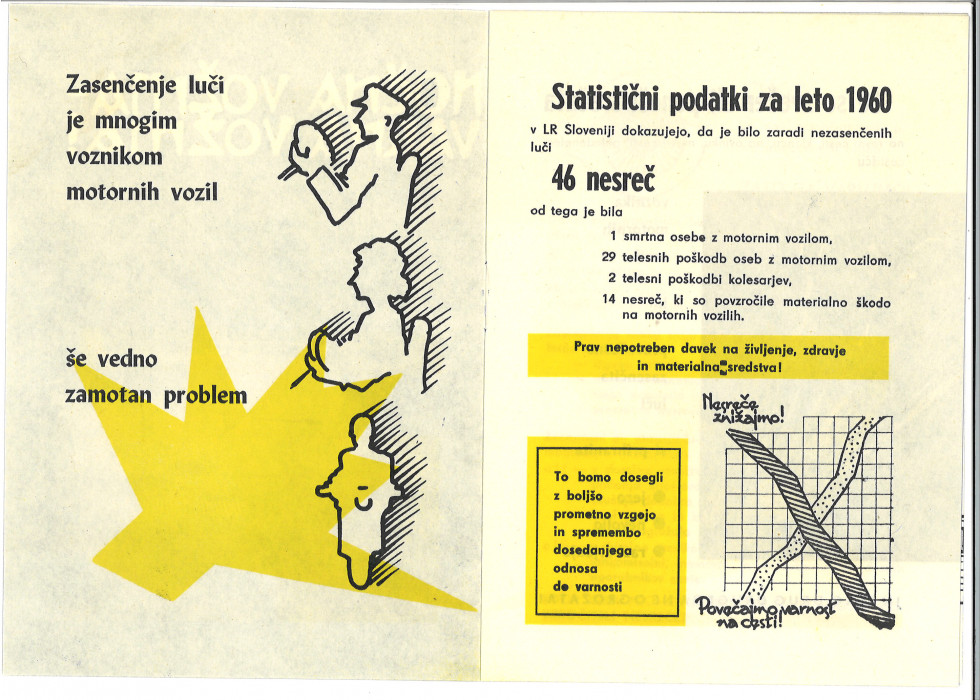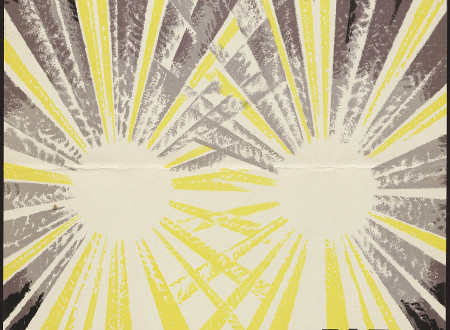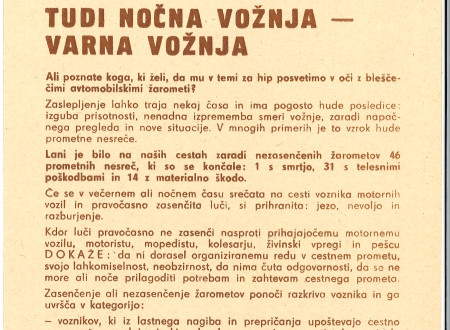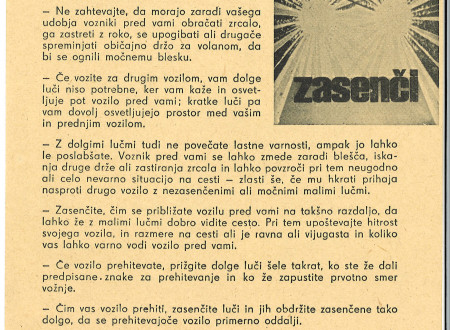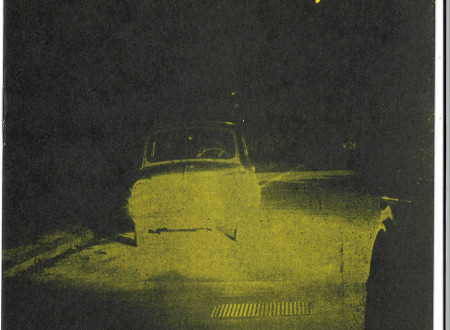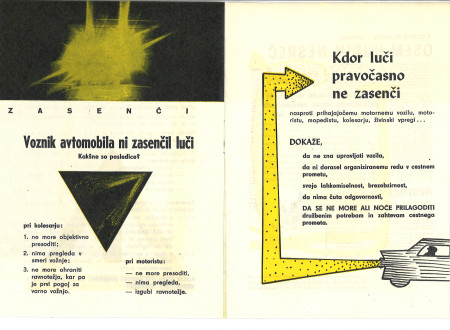»Switching off Full Beam Headlights is still a Complicated Issue for Many Motor Vehicle Drivers«
Road safety
In recent years, Slovenia has made great progress in the field of road safety. The number of people killed or seriously injured in traffic accidents has dropped significantly. One of the main reasons for this achievement is systematic and planned effort put into preventive measures and education of road traffic participants.
The turning point took place in the 1950s, when a special department, later also coordination board and commission for road traffic safety and education, was set up at the then State Secretariat of the Interior. Developments in traffic and in means of transportation led to an increased use of personal vehicles, which inevitably resulted in the increase of road traffic casualties. To coordinate the work of all the participants involved – traffic participants and numerous institutions, such as the police, ministries of the interior, traffic and education, as well as civil initiatives that might somehow contribute to road safety – a Council for the Prevention and Education in Road Traffic was established on December 22, 1971. It operated as an independent body right up to the end of 2006, when it was included in the Slovenian Roads Agency, and has since 2010 been operating as part of the Slovenian Traffic Safety Agency.
The tasks and activities of the council, however, have remained the same throughout all this time. It studies and discusses road traffic related issues and supports scientific and research work in the field of road traffic safety. It also promotes and directs road traffic education programmes and coordinates prevention activities carried out by road traffic safety bodies and organisations. It provides professional assistance to municipal and inter-municipal councils that carry out prevention and road traffic education programmes, and coordinates their work when organising road safety education activities. It publishes traffic safety education books, promotes road safety and education in the media, and suggests measures to improve the safety of all traffic participants.
The beginnings of mass motorization in Slovenia go back to the1960s and coincide with the construction of new road sections and the planning of the first few kilometres of motorways. As a result, this increase in traffic, along with some other causes, led to an increased number of road traffic fatalities.
One of the major issues at that time was the use of high beam headlights, which dazzled drivers in the preceding vehicles and other traffic participants alike. To avoid the brightness of the beams from behind, the drivers in the preceding cars had to repeatedly turn their rear-view mirrors or shield them with their hands, often also trying to bend or change their usual posture behind the wheel. To prevent such behaviour, a campaign was launched, led by the Commission of the People’s Republic of Slovenia for Road Education and Safety. Its purpose was to put a stop to such dangerous behaviour and to raise awareness among the drivers that they were not alone on the road and that for safety’s reasons they needed to switch off their full beam headlights. The emphasis here was particularly on the night driving.
A brochure, which was published for this particular purpose, stated among other things also the road accidents statistics; in 1960, there were 46 accidents that took place because of the failure to switch off full beam headlights, causing the death of one person in a motor vehicle, 29 people in motor vehicles were injured, as well as 2 cyclists, and 14 of such accidents only caused material damage. The brochure goes on to say that by turning off your high beams on time at night, we can avoid the anger and irritation and make sure that we are not posing a danger to others. At the same time we show that we are in control of our vehicle, that we know how to observe the road traffic rules, that we are responsible and that we can adapt to the social needs and requirements of road traffic. The brochure also touches upon our eyes as our most sensitive and most valuable organ, which we need to protect and so prevent road blindness, which can lead to serious consequences – from loss of consciousness, sudden change in driving direction and ultimately to car accidents. The brochure was to raise awareness among the drivers, using basically the same words as today – we are not alone on the road, we have a responsibility to protect our own lives and the lives of others, because life is a priority.
Statistical data published today by the Police on its website no longer states high beam headlights as a cause for car accidents. Owing to developments in traffic infrastructure and in car industry, the issues of that time seem almost imperceptible. Although in new cars high beam headlights now switch off automatically, this has not completely eliminated accidents connected with the use of high beam headlights, but such accidents are now statistically reported under different categories of car accidents or reasons for car accidents.
The vision of the Slovenian Traffic Safety Agency is “zero” traffic accidents. To achieve this goal, we need to raise people’s awareness about road safety, as well as make each individual understand that he or she is not alone on the road – the slogan of the 1960s has thus remained relevant up to the present day and will remain relevant in the future as well.
Maja Povalej


